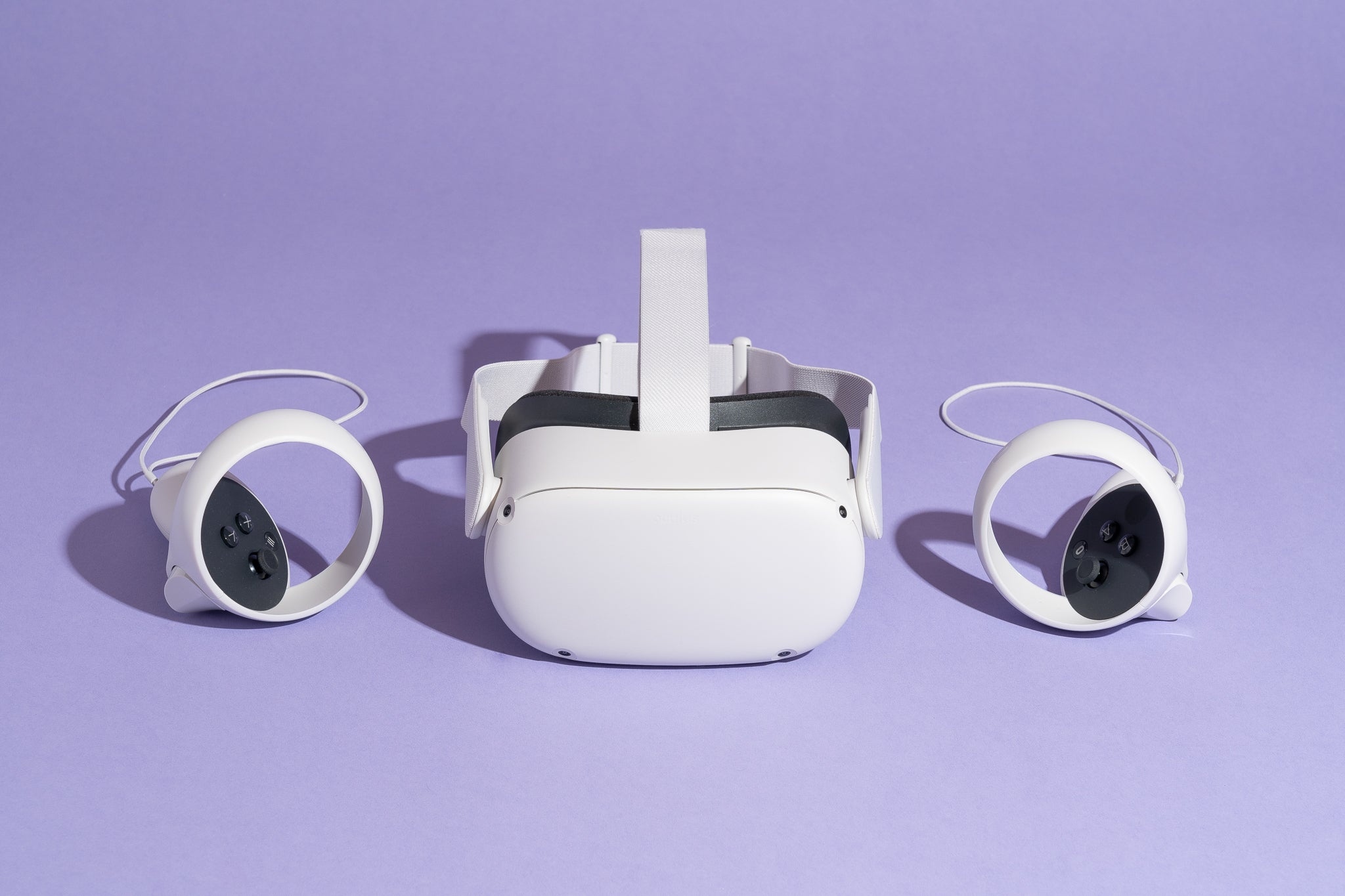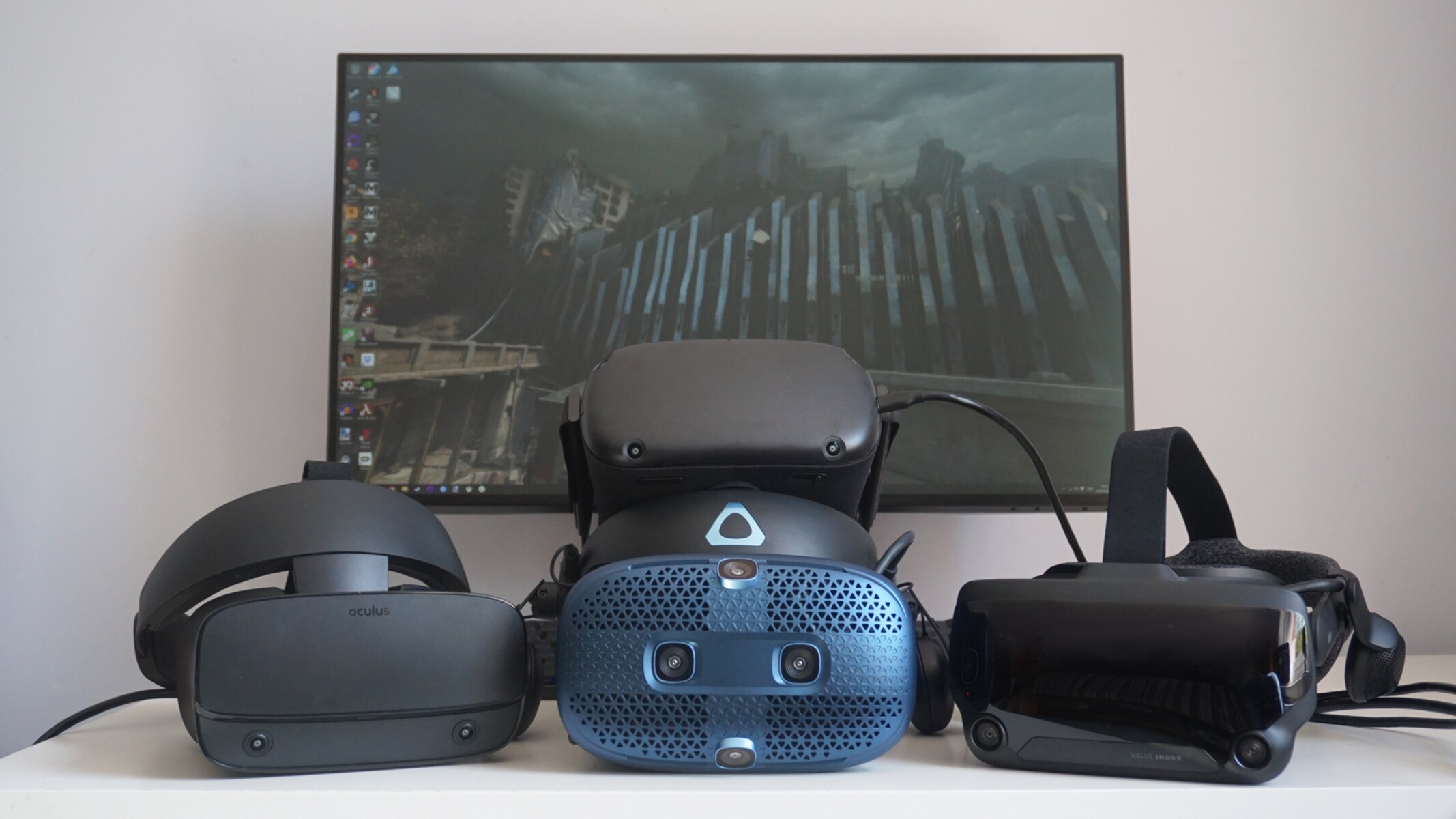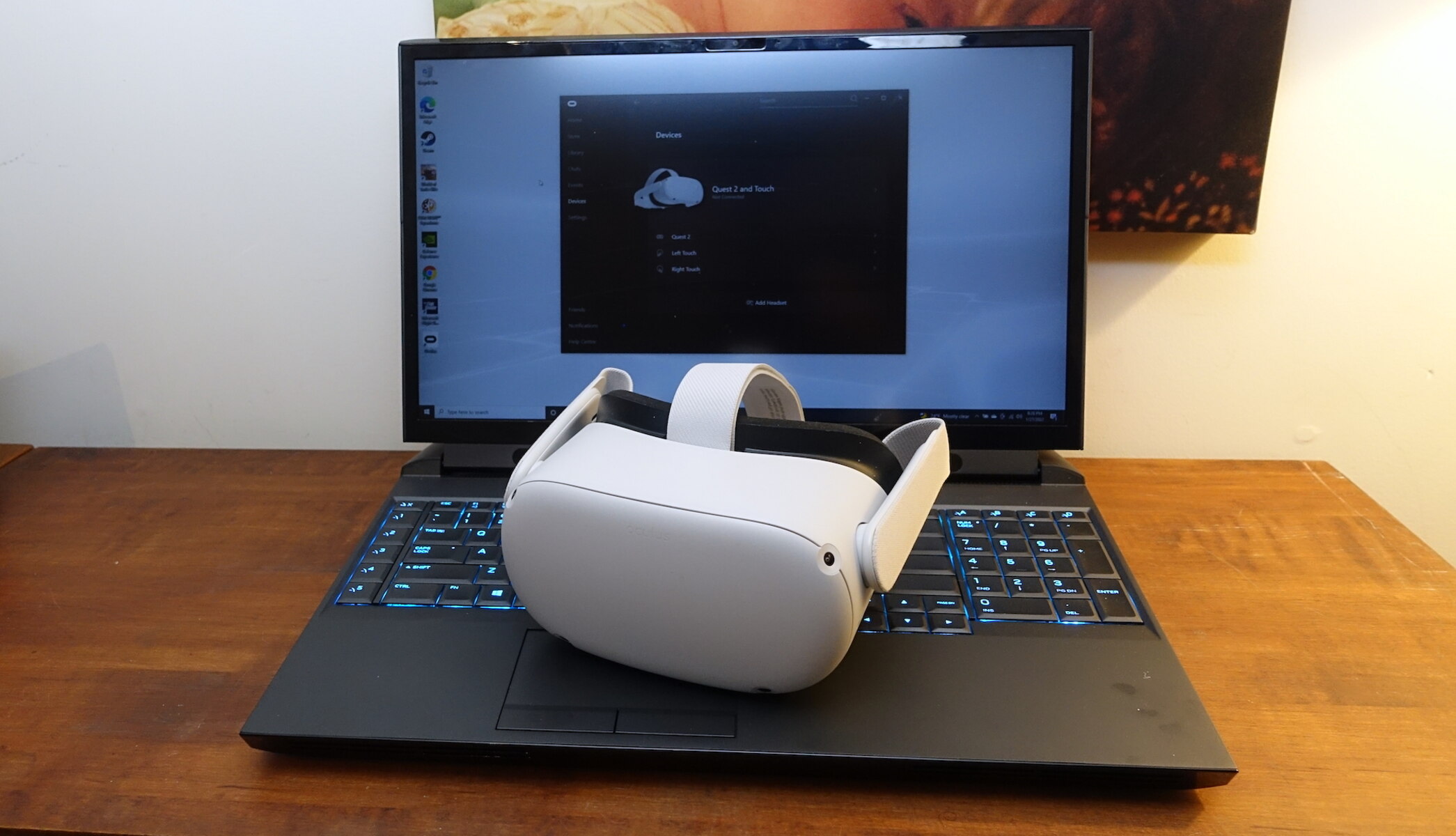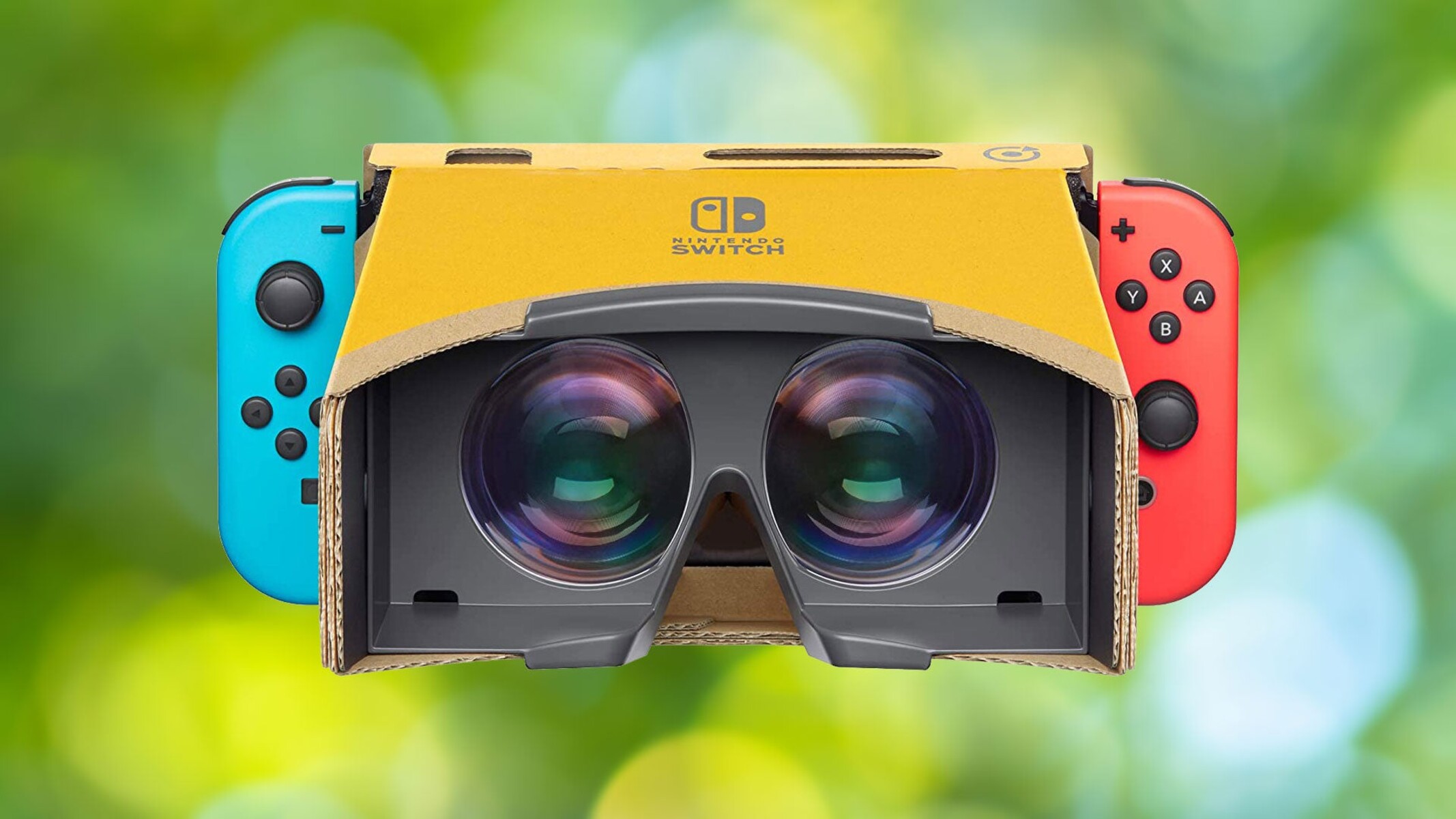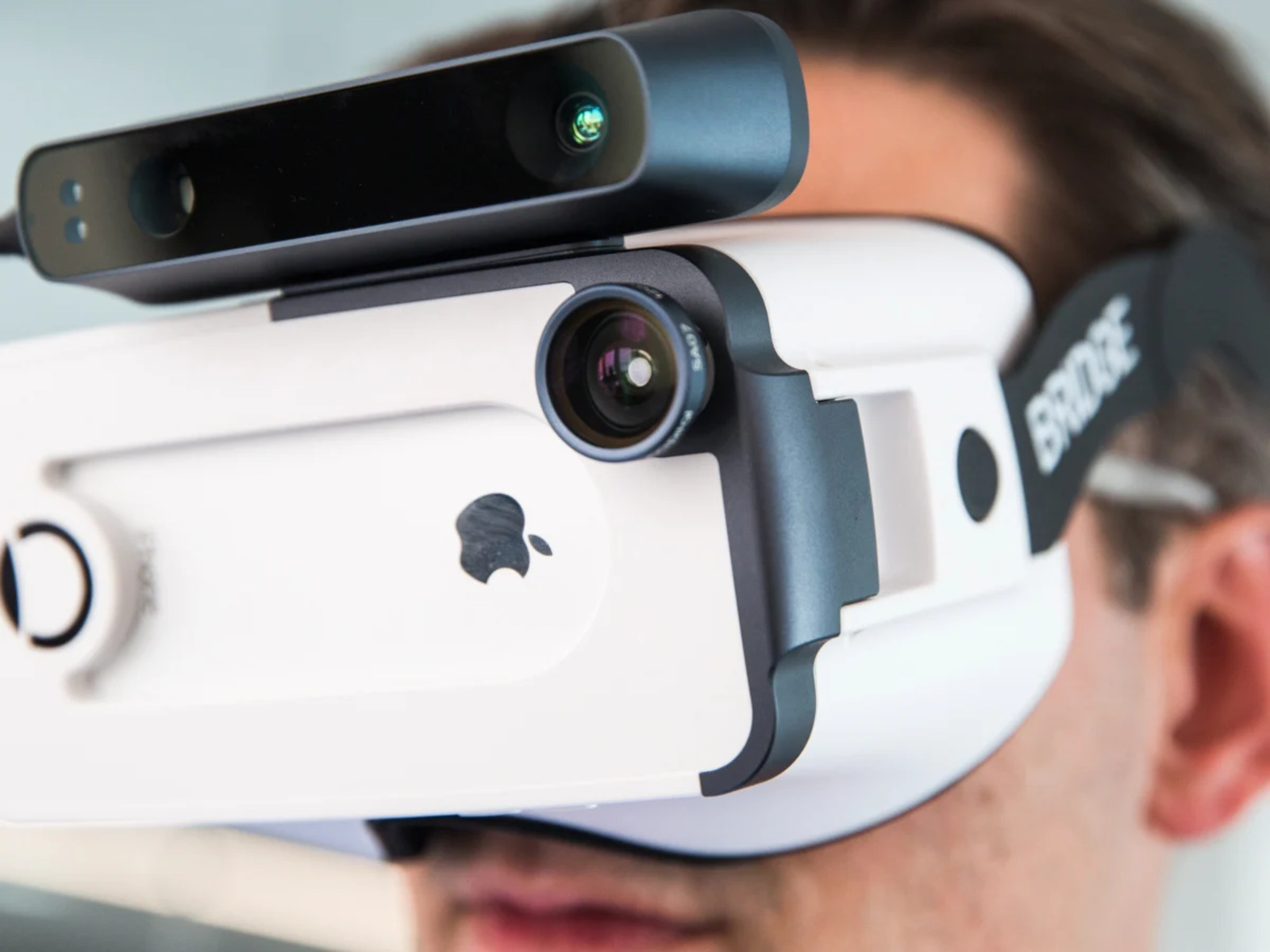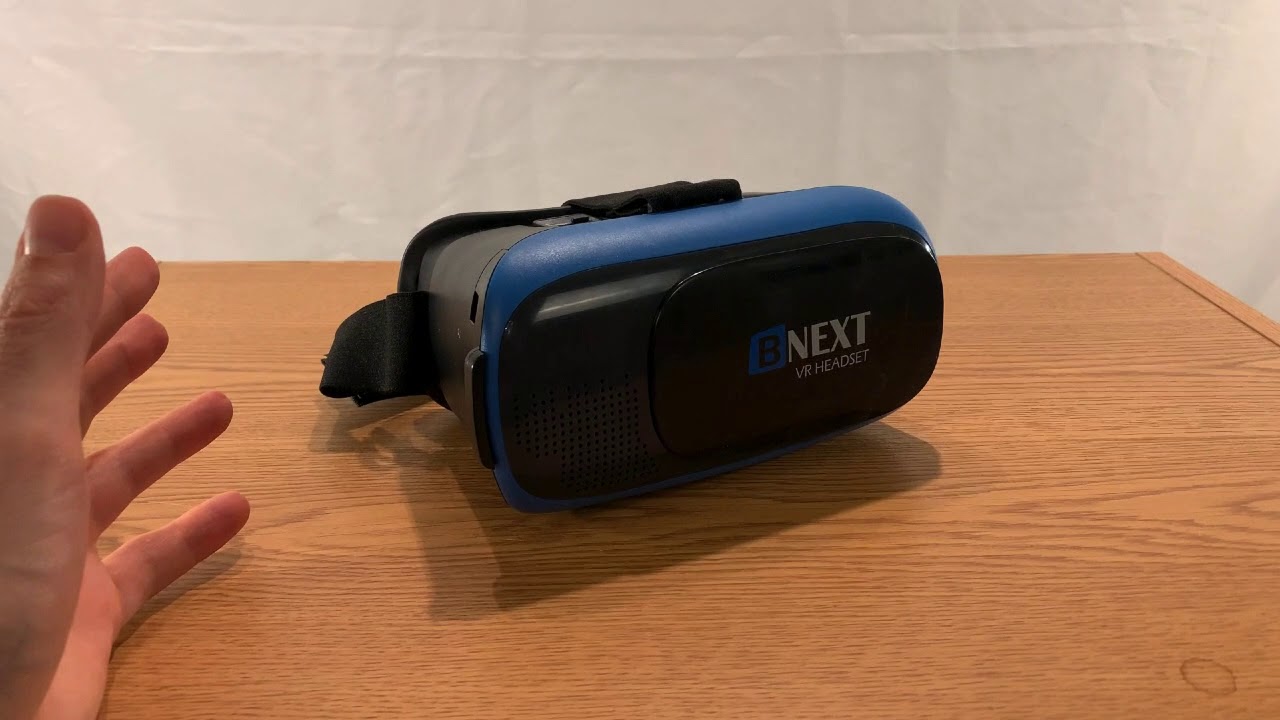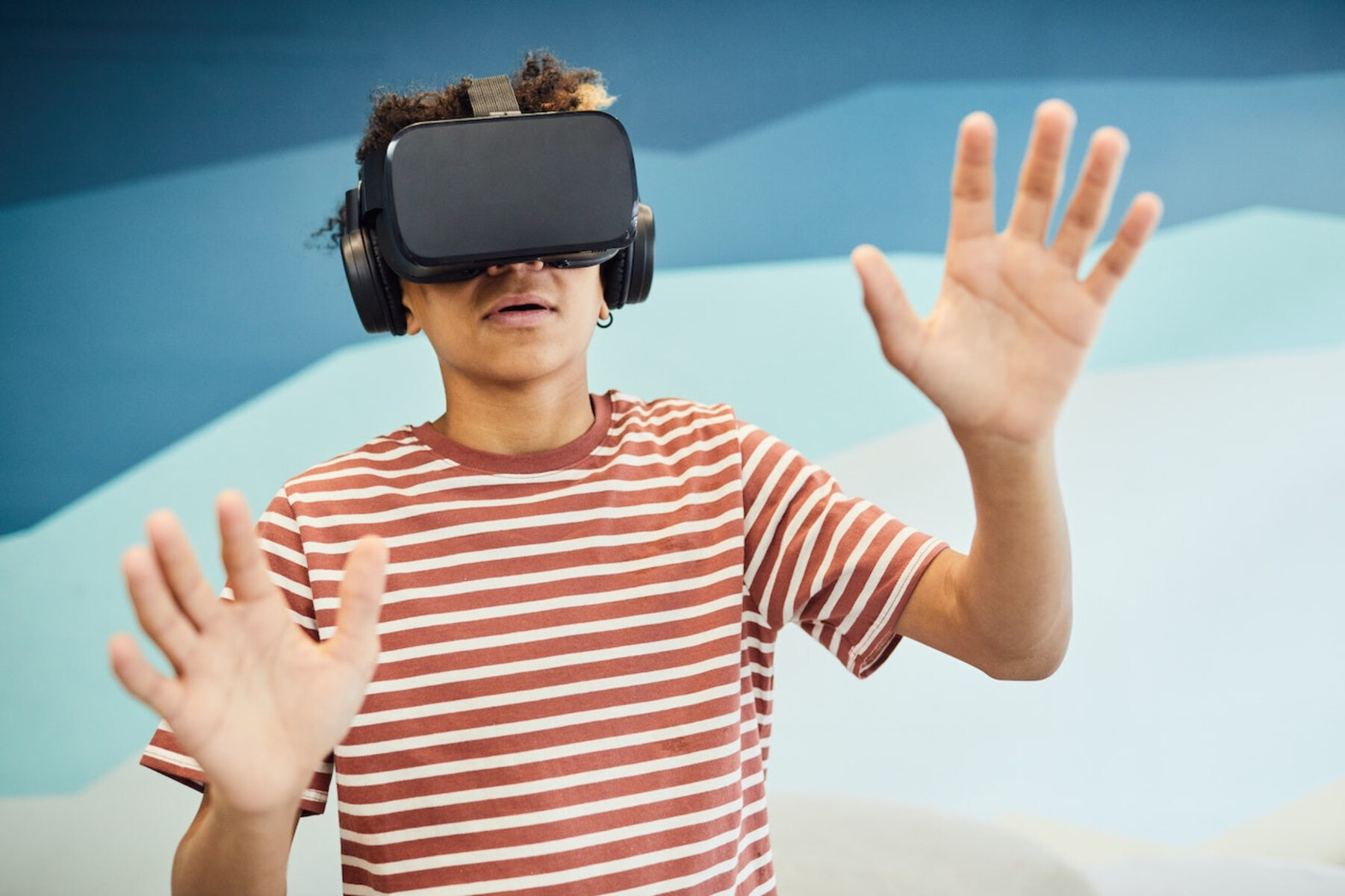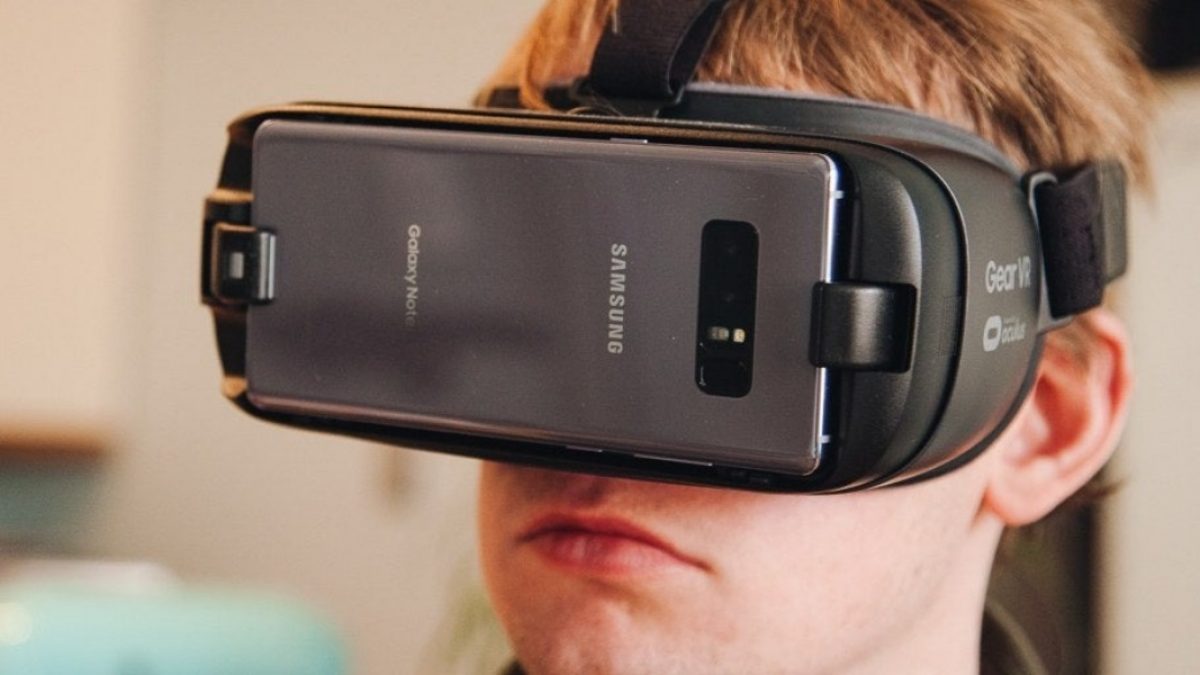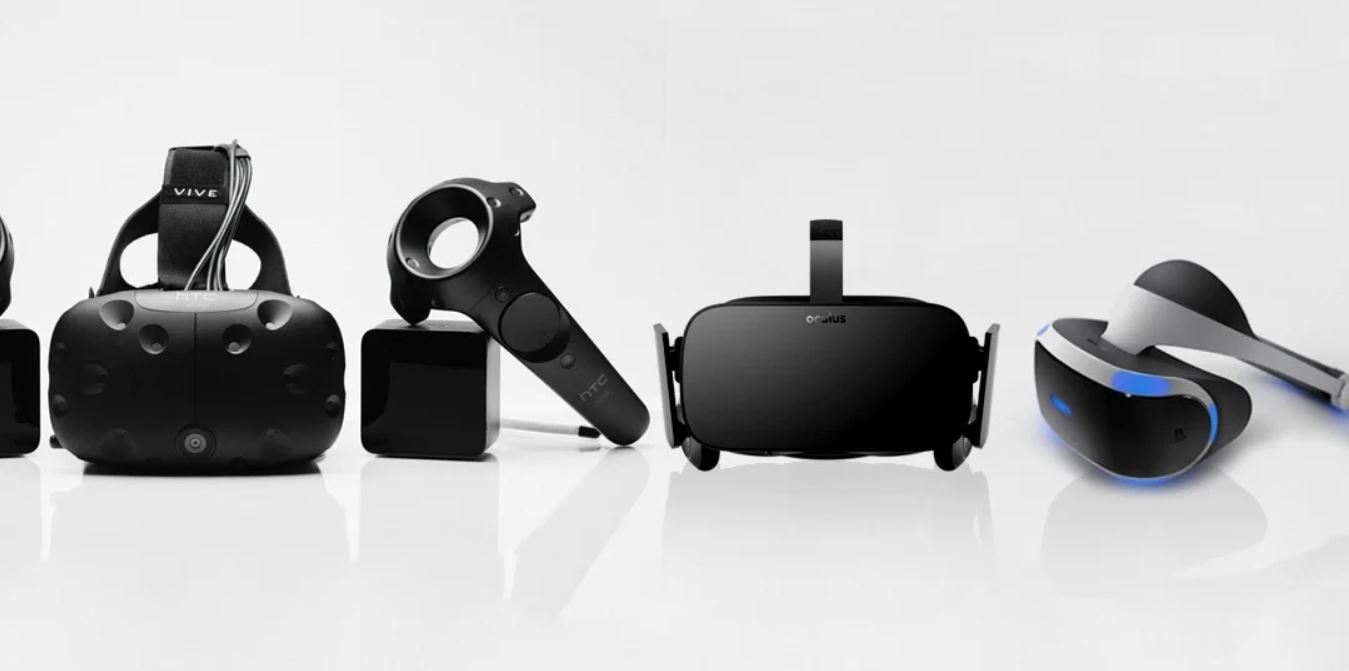Introduction
Welcome to the exciting world of virtual reality! Over the past decade, virtual reality (VR) technology has made remarkable strides, revolutionizing the way we experience digital content. From immersive gaming experiences to virtual travel and educational simulations, VR has opened up new avenues for entertainment, learning, and exploration.
But what exactly is virtual reality, and what role does a VR headset play in this immersive experience? In this article, we will delve into the fascinating world of VR headsets, exploring their functions, types, benefits, and limitations. Whether you’re a tech enthusiast or a curious individual looking to explore the possibilities of virtual reality, we’ve got you covered.
Before we delve deeper into VR headsets, let’s first understand what virtual reality is all about. Virtual reality refers to a simulated experience that can be similar to or completely different from the real world. It immerses users into a digital environment, creating a sense of presence and interactivity.
A VR headset is a crucial component of the virtual reality experience. It serves as a wearable device that users wear over their eyes, immersing them in a virtual world. These headsets combine high-resolution displays, sensors, and motion tracking technologies to create a realistic and immersive virtual experience. By wearing a VR headset, users can explore digital landscapes, interact with virtual objects, and feel fully immersed in the virtual environment.
VR headsets work by presenting each eye with a slightly different image, mimicking the way our eyes perceive depth in the real world. This creates a 3D effect, enhancing the sense of immersion and realism. The built-in sensors track the user’s head movements, enabling them to look around and explore the virtual world from different angles. Some advanced VR headsets also include hand controllers, allowing users to interact with objects and navigate through the virtual space.
There are different types of VR headsets available on the market, ranging from high-end devices with advanced features to more affordable options designed for casual users. Each type offers a unique set of features and capabilities, catering to different user preferences and budgets. We’ll explore these types in detail in the upcoming sections of this article.
So, why would someone choose to use a VR headset? The benefits of using a VR headset are vast and varied. From immersive gaming and entertainment experiences to virtual travel, education, and training applications, VR headsets offer a whole new level of engagement and interactivity. We’ll delve into these benefits further in the subsequent sections.
While VR headsets provide incredible experiences, they also have their limitations. Factors such as motion sickness, limited field of view, and the need for powerful hardware can impact the overall user experience. We’ll discuss these limitations in detail to give you a comprehensive understanding of what to expect when using a VR headset.
Now that we have a basic understanding of virtual reality, VR headsets, and their functions, let’s dive into the different types of VR headsets available in the market and explore the features and specifications of popular models. Whether you’re a tech-savvy enthusiast or a casual user, choosing the right VR headset is crucial to ensure an optimal and enjoyable virtual reality experience.
What Is Virtual Reality?
Virtual reality (VR) is a technology that creates a simulated environment that users can interact with in a seemingly real or physical way. It provides a sensory experience that can be similar to or completely different from the real world. By wearing a VR headset, users are transported to a virtual environment where they can explore, interact, and engage with digital content in a realistic and immersive way.
Virtual reality utilizes a combination of hardware and software components to create this immersive experience. The key elements include a VR headset, which is worn over the eyes and displays a virtual world, and various sensors and input devices that track the user’s movements and actions within the virtual environment.
The concept of virtual reality has been around for several decades, but it is in recent years that significant advancements have been made, making VR more accessible and realistic. With technological advancements in graphics processing, motion tracking, and display technologies, virtual reality has become increasingly immersive and capable of delivering truly captivating experiences.
One of the primary goals of virtual reality is to create a sense of presence, where users feel as if they are physically present in the virtual environment. This is achieved by combining realistic graphics, spatial audio, and precise tracking of head movements to create a seamless and convincing virtual world.
Virtual reality has found applications in various fields, including entertainment, gaming, education, training, healthcare, architecture, and more. In the realm of gaming, VR has transformed the way we experience and interact with digital games, providing a level of immersion and realism that was previously unimaginable.
In the field of education, virtual reality offers new opportunities for immersive learning experiences. Students can take virtual field trips to historical sites or explore complex scientific concepts through interactive simulations. VR training simulations are also widely used to provide hands-on training in industries such as aviation, medicine, and military.
VR also has the potential to revolutionize the way we consume media and entertainment. Imagine being able to attend live concerts or sports events from the comfort of your home, or taking a virtual tour of famous landmarks and tourist destinations around the world. Virtual reality opens up a whole new world of possibilities in terms of experiencing and connecting with digital content.
While virtual reality has come a long way, it is important to note that it is still a developing technology. There are challenges to overcome, such as motion sickness, the need for powerful hardware, and the creation of compelling and realistic content. However, as technology continues to advance, virtual reality is expected to become even more immersive, accessible, and integrated into our everyday lives.
What Is a VR Headset?
A virtual reality (VR) headset is a wearable device that allows users to immerse themselves in a virtual world by covering their eyes and ears with a display and audio system. It is an essential component of the virtual reality experience, as it enables users to see and hear the simulated environment, creating a sense of presence and interactivity.
VR headsets consist of several key components that work together to deliver a seamless and immersive virtual reality experience. The primary component is the display, which is usually a high-resolution screen or multiple screens, one for each eye. This display technology can vary depending on the type and quality of the VR headset.
In addition to the display, VR headsets incorporate lenses to focus and optimize the image for each eye. These lenses help create a 3D effect by presenting a slightly different image to each eye, mimicking the natural depth perception of the human visual system.
Another crucial component of VR headsets is the head-tracking system. This system uses sensors, such as accelerometers and gyroscopes, to track the movement of the user’s head in real-time. This allows the virtual environment to respond to the user’s movements, updating the displayed image accordingly.
To provide an immersive audio experience, VR headsets often come equipped with built-in headphones or audio speakers. This audio system delivers spatial sound, enhancing the sense of presence and creating a realistic auditory experience in the virtual environment.
VR headsets can be categorized into two main types: tethered and standalone. Tethered VR headsets require a connection to a gaming console or a powerful computer to provide the necessary processing power and graphics capabilities. These headsets offer high-quality visuals and sophisticated tracking systems but are generally more expensive and require a dedicated gaming setup.
On the other hand, standalone VR headsets are self-contained devices that do not require external sensors or a computer to operate. They have built-in processors and storage, offering a more convenient and portable VR experience. While standalone headsets may not have the same level of graphics and tracking capabilities as tethered headsets, they provide an accessible entry point to virtual reality at a more affordable price point.
VR headsets are not only used for gaming and entertainment purposes but also find application in various industries. In architecture and design, VR headsets allow architects and designers to visualize and walk through virtual models of buildings before they are constructed. In healthcare, VR headsets are utilized for medical training and rehabilitation purposes, allowing medical professionals and patients to simulate scenarios and practice procedures in a safe and controlled environment.
As the technology continues to evolve, VR headsets are becoming more comfortable, compact, and user-friendly. Manufacturers are constantly pushing the boundaries of what is possible, striving to improve the visual quality, tracking accuracy, and overall user experience. With the advancements in haptic feedback and hand-tracking technologies, future VR headsets are expected to offer an even more immersive and interactive experience.
In the next section, we will explore how a VR headset works and the underlying technologies that make virtual reality possible.
How Does a VR Headset Work?
A virtual reality (VR) headset is a remarkable piece of technology that works in tandem with specialized software to create an immersive and realistic virtual experience. To understand how a VR headset works, let’s explore the key components and underlying technologies that enable this impressive feat.
The primary function of a VR headset is to deliver visual and auditory stimuli that trick our senses into perceiving a virtual environment as if it were real. The headset accomplishes this through a combination of high-resolution displays, lenses, positional tracking, and audio systems.
At the core of a VR headset are the displays, typically OLED or LCD screens, with each eye being presented with a slightly different image. These displays are responsible for rendering the virtual world and creating the illusion of depth and dimension. The resolution and refresh rate of the displays are crucial factors in determining the visual fidelity and smoothness of the VR experience.
To ensure that the visuals are presented correctly, VR headsets employ lenses to magnify and focus the images emitted by the displays. These lenses help direct the light rays into the user’s eyes, creating a more realistic and immersive perception of the virtual environment. Additionally, lenses can correct for various visual impairments, such as nearsightedness or farsightedness, allowing users to enjoy the VR experience without wearing their prescription glasses.
For an accurate and responsive virtual reality experience, VR headsets incorporate positional tracking technology. This technology typically involves a combination of inertial measurement units (IMUs), such as accelerometers and gyroscopes, and external sensors. These sensors track the movement of the user’s head in real-time, enabling the virtual environment to adjust accordingly and provide an accurate and seamless experience.
Some high-end VR headsets use external tracking systems, such as infrared cameras or laser sensors, placed in the room to precisely track the position and orientation of the headset. These systems can deliver millimeter-level tracking accuracy and allow for full-body tracking, enhancing the immersion even further.
Audio plays a crucial role in creating an immersive virtual experience, and VR headsets incorporate various audio systems to enhance the sense of presence. This can include built-in headphones or earbuds that provide spatial audio, allowing users to locate sounds coming from different directions within the virtual environment. Some headsets even support 3D audio technologies that take into account the user’s head movements, creating a convincing and realistic auditory experience.
In addition to the hardware components, VR headsets rely on software and content specifically designed for virtual reality. This includes VR applications, games, simulations, and experiences that are optimized for the immersive nature of VR. The software works in conjunction with the headset’s tracking and rendering capabilities to create an engaging and interactive virtual world for the user to explore.
It is worth noting that the success of a VR headset also relies on the computational power of the device driving the virtual experience. Tethered VR headsets often connect to a high-performance gaming PC or console, allowing for robust graphics processing and real-time rendering. Standalone headsets, on the other hand, have built-in processors that handle the computational demands, albeit with some trade-offs in graphics capabilities.
As virtual reality technology continues to evolve, advancements in display technology, tracking systems, and processing power contribute to more realistic and immersive experiences. The development of haptic feedback systems, which provide tactile sensations, and advancements in eye-tracking technology are examples of ongoing research and development efforts aimed at enhancing the realism and interactivity of VR headsets.
In the next section, we will explore the different types of VR headsets available on the market and the unique features and capabilities they offer.
Types of VR Headsets
Virtual reality (VR) headsets come in various types, each offering unique features and capabilities. Whether you’re a gaming enthusiast, a casual user, or a professional in a specific industry, there is a VR headset that suits your needs and preferences. Let’s explore the different types of VR headsets available on the market today.
1. Tethered VR Headsets:
Tethered VR headsets, also known as PC-powered VR headsets, require a connection to a high-performance gaming PC or console to function. These headsets offer the most immersive and high-fidelity virtual reality experiences available. They typically include a set of high-resolution displays, precise positional tracking, and advanced motion controllers. Some popular models in this category include the Oculus Rift, HTC Vive, and Valve Index.
2. Standalone VR Headsets:
Standalone VR headsets do not require external devices or a computer to operate. They have built-in processors and storage, providing a convenient and portable VR experience. These headsets are generally more affordable and accessible to a broader audience. Standalone headsets offer wireless freedom and are suitable for activities such as gaming, media consumption, and casual VR experiences. Popular examples of standalone VR headsets include the Oculus Quest and the HTC Vive Focus.
3. Mobile VR Headsets:
Mobile VR headsets work by converting a smartphone into a VR device. They are typically affordable and easy to use, as they rely on smartphones’ built-in sensors and display capabilities. Users insert their smartphones into the headset and access VR content through compatible apps and platforms. While mobile VR headsets offer an entry-level VR experience, they are limited by the processing power and graphics capabilities of smartphones. Popular examples include the Samsung Gear VR and Google Cardboard.
4. Mixed Reality Headsets:
Mixed reality headsets, also known as augmented reality (AR) headsets, blend virtual elements with the real world. These headsets incorporate cameras and sensors to map and track the real-world environment while overlaying digital objects or information. Mixed reality headsets enable users to interact with virtual objects in their physical space, opening up possibilities for gaming, productivity, and design applications. Notable examples include the Microsoft HoloLens and the Magic Leap One.
5. PlayStation VR:
Designed exclusively for the PlayStation 4 gaming console, the PlayStation VR headset provides an immersive gaming experience for PlayStation users. It connects to the console and utilizes the PlayStation Move motion controllers for tracking and interaction. With a growing library of VR games and experiences, PlayStation VR offers a convenient and accessible entry into virtual reality gaming.
Each type of VR headset has its own strengths and limitations, catering to different user preferences, budgets, and use cases. When choosing a VR headset, consider factors such as the level of immersion, tracking accuracy, graphical capabilities, ease of use, and the availability of content and applications that align with your interests.
It is important to note that VR headset technology is continually advancing, and new models and innovations are constantly being introduced. As virtual reality becomes more popular and mainstream, we can expect to see even more diverse and advanced VR headsets in the future.
In the next section, we will explore the benefits of using a VR headset and how it can enhance various aspects of our lives.
Benefits of Using a VR Headset
Using a virtual reality (VR) headset offers numerous benefits, enhancing various aspects of entertainment, education, training, and more. Whether you’re a gamer, a student, a professional, or someone simply looking to explore new experiences, here are some of the key advantages of using a VR headset:
1. Immersive Gaming Experience:
One of the most notable benefits of using a VR headset is the immersive gaming experience it provides. VR gaming allows you to step into a virtual world and interact with the environment and characters in a way that traditional gaming cannot offer. The ability to look around, walk, and manipulate objects in a virtual space creates a heightened sense of engagement and realism, making gaming experiences truly unforgettable.
2. Virtual Travel and Exploration:
With a VR headset, you can travel the world without leaving your home. Virtual travel experiences allow you to visit famous landmarks, explore exotic destinations, and even dive into the depths of the ocean, all from the comfort of your living room. VR can provide a sense of presence and immersion that transports you to faraway places, offering a unique way to explore and learn about the world.
3. Interactive Educational Experiences:
VR in education opens up new possibilities for immersive and interactive learning. Students can engage in virtual field trips, exploring historical sites, or visit distant planets for an astronomy lesson. VR simulations allow for hands-on experiences in science, engineering, and medical fields, providing a safe and controlled environment for experimentation and practice. VR can enhance comprehension and retention, making learning engaging and memorable.
4. Virtual Training and Simulation:
VR has significantly impacted training across various industries. From aviation to healthcare, VR simulations allow professionals to practice and refine their skills in realistic and controlled environments. Pilots can train on flight simulators, surgeons can perform virtual surgeries, and emergency responders can simulate crisis scenarios. Virtual training reduces costs, enhances safety, and provides valuable practical experience.
5. Therapeutic and Rehabilitation Applications:
VR technology has found valuable applications in therapy and rehabilitation. Virtual reality simulations can provide a distraction from pain, anxiety, or discomfort during medical procedures. VR is also used for physical and cognitive rehabilitation, helping individuals regain mobility, improve motor skills, or manage a range of conditions such as PTSD or phobias.
6. Enhanced Design and Visualization:
In architecture, engineering, and design fields, VR allows professionals to visualize and walk through virtual models before construction begins. This enables architects and designers to identify potential issues, make design decisions, and present their ideas more effectively. VR-based design reviews provide a collaborative platform for stakeholders to evaluate and provide feedback on projects.
7. Virtual Social Experiences:
VR also enables social interactions in virtual spaces. Friends and family from different locations can meet up in VR chatrooms or multi-player games, fostering a sense of presence and connection. Virtual social experiences can help combat feelings of isolation and provide a unique way to engage with others in a virtual environment.
These are just a few examples of the benefits of using a VR headset. As technology continues to advance and VR becomes more accessible, the possibilities for enhancing entertainment, education, training, and beyond are endless.
In the next section, we will explore the limitations and challenges associated with VR headsets.
Limitations of VR Headsets
While virtual reality (VR) headsets offer incredible immersive experiences, it is important to be aware of their limitations and challenges. Here are some of the key limitations that users may encounter when using VR headsets:
1. Motion Sickness:
One of the most common issues with VR is motion sickness. Some users may experience discomfort, nausea, or dizziness, especially when the movement in the virtual environment does not match their physical movement. This disparity between visual and physical sensations can cause a disconnect and lead to motion sickness. However, with improvements in hardware and software, developers are working to reduce this issue through techniques such as reducing latency and improving tracking accuracy.
2. Limited Field of View:
VR headsets have a limited field of view, which means that users can only see a portion of their surroundings. This can sometimes create a sense of tunnel vision, limiting the overall visual experience. While this limitation is improving with newer headset models, it is still a factor to consider when using VR.
3. Requirements for Powerful Hardware:
To run VR applications smoothly, powerful hardware is often required. This includes a high-performance computer or gaming console with a capable graphics card and sufficient processing power. The cost and technical requirements of these systems can be a barrier for some users who may not have access to or may not be willing to invest in the necessary hardware.
4. Learning Curve and User Interaction:
Using VR headsets and interacting within virtual environments can have a learning curve. Some users may find it challenging to understand and navigate the user interface and controls, especially when wearing the headset and not being able to see their physical surroundings. However, advancements in user interfaces and hand-tracking technologies are improving user interactions and making it more intuitive and natural.
5. Limited Content Availability:
While the library of VR content is growing, it is still limited compared to traditional gaming or entertainment platforms. Access to a wide range of diverse and high-quality VR experiences may be restricted, depending on the platform or headset being used. However, as VR technology continues to gain popularity, more developers are creating engaging and innovative VR content.
6. Physical Comfort and Ergonomics:
Wearing a VR headset for an extended period can be physically uncomfortable for some users. The weight of the headset, the pressure on the face and head, and the fit of the device may cause discomfort or even headaches. Eyestrain can also be a concern if users do not take regular breaks or adjust settings to fit their comfort level. Proper ergonomics and finding the right fit for the headset can help alleviate these issues.
7. Cost:
VR headsets can vary in price, with higher-end models often being more expensive. The cost can be a significant barrier for some users who may be hesitant to invest in a VR headset due to its limited content availability or their budget constraints.
Despite these limitations, virtual reality technology continues to improve and evolve. Developers and manufacturers are actively addressing these challenges, striving to provide a more comfortable, accessible, and user-friendly VR experience.
Even with these limitations, VR headsets offer unique and engaging experiences that enhance entertainment, learning, and various professional fields. As technology advances, we can expect VR headsets to become more immersive, comfortable, and inclusive, allowing users to unlock even more of the potential that virtual reality has to offer.
In the next section, we will explore some of the popular VR headsets available on the market today.
Popular VR Headsets on the Market
With the growing popularity of virtual reality (VR), there are several VR headsets available on the market. These headsets offer a range of features and capabilities, catering to different user preferences and budgets. Here are some of the popular VR headsets currently on the market:
1. Oculus Rift S:
The Oculus Rift S is a highly regarded PC-powered VR headset. It features a high-resolution display, advanced inside-out tracking, and ergonomic controllers. With access to a diverse library of VR games and experiences from the Oculus Store, the Oculus Rift S provides a compelling and immersive VR experience for gamers and enthusiasts.
2. HTC Vive Cosmos:
The HTC Vive Cosmos is known for its comfortable design and impressive visuals. This PC-powered headset offers a high-resolution display, precise tracking, and adjustable lenses. The Vive Cosmos also boasts a modular faceplate, allowing for future upgrades and customization.
3. PlayStation VR:
The PlayStation VR (PSVR) is a popular choice for console gamers. Designed for use with the PlayStation 4, the PSVR offers ease of use and affordability. The headset combines a high-quality OLED display with precise tracking and PlayStation Move controllers, providing an immersive gaming experience for PlayStation users.
4. Oculus Quest 2:
The Oculus Quest 2 is a standalone VR headset that offers both affordability and versatility. With built-in sensors and cameras, the Quest 2 provides room-scale tracking and hand-tracking capabilities. It offers a wide range of VR games and experiences and can be used wirelessly or connected to a PC for even more demanding VR content.
5. Valve Index:
The Valve Index is a high-end PC-powered VR headset known for its exceptional visual quality and precise tracking. With a high refresh rate and a field of view that offers an expansive view of the virtual world, the Valve Index provides an immersive experience for gamers and enthusiasts. It also has advanced controllers with finger tracking, offering more natural and expressive interactions.
6. Samsung Odyssey VR:
Samsung’s Odyssey VR headsets, including the Odyssey+ and the Odyssey G9, are popular choices for PC-powered VR experiences. They feature high-resolution displays, comfortable designs, and adjustable IPD (inter-pupillary distance), allowing users to customize their experience for optimal comfort and clarity.
7. Oculus Go:
The Oculus Go is a standalone VR headset that offers an entry-level VR experience at an affordable price. It features a 3DOF (degrees of freedom) tracking system, allowing users to look around in the virtual environment. While it may not have the same level of graphical capabilities as higher-end headsets, the Oculus Go offers a convenient and accessible option for casual users and media consumption.
These are just a few examples of the popular VR headsets available on the market. Each headset has its unique set of features, performance capabilities, and price points. When choosing a VR headset, it is essential to consider factors such as visual quality, tracking accuracy, comfort, compatibility, and available content.
As the field of VR continues to evolve, new headsets and innovations are constantly being introduced, offering even more exciting and immersive experiences for users.
In the next section, we will provide some tips on how to choose the right VR headset for your needs.
How to Choose the Right VR Headset for You
Choosing the right virtual reality (VR) headset can greatly enhance your immersive experiences and ensure optimal compatibility with your needs. With a variety of options available, here are some factors to consider when selecting a VR headset:
1. Purpose and Use:
Define the primary purpose for purchasing a VR headset. Are you primarily interested in gaming, educational experiences, professional applications, or a combination of these? Understanding your intended use will help narrow down the options and focus on the headsets that best suit your needs.
2. Platform Compatibility:
Consider the platform with which the VR headset is compatible. Some headsets require powerful gaming PCs or specific gaming consoles, while others are standalone or mobile-dependent. Ensure that the headset aligns with your existing hardware or is compatible with your preferred platform.
3. Display Quality:
Pay attention to the display quality of the VR headset. Consider factors such as resolution, refresh rate, and field of view to determine the level of visual fidelity and immersion you desire. Higher resolution and refresh rates generally offer crisper visuals and smoother experiences.
4. Tracking Capabilities:
Tracking is a crucial aspect of VR, so evaluate the tracking capabilities of the headset. Look for features like positional tracking, which allows for more accurate movement within the virtual environment. Consider whether the headset utilizes inside-out or external sensor-based tracking for a more reliable and seamless tracking experience.
5. Comfort and Ergonomics:
Wearing a VR headset for extended periods can be physically demanding, so prioritize comfort and ergonomics. Look for headsets with adjustable straps, well-padded foam cushions, and a weight distribution that fits your head shape and size. Ergonomic designs can alleviate discomfort and enable longer, more enjoyable VR sessions.
6. Content Availability:
Check the availability of VR content and applications for the headset. Some headsets have a vast library of games, educational experiences, and applications, while others may have a more limited selection. Ensure that the headset you choose offers the types of content that align with your interests and preferences.
7. Budget Considerations:
Set a budget for your VR headset purchase and consider the price range of available options. While higher-end headsets often offer more advanced features and capabilities, there are also more affordable options that provide great entry-level VR experiences. Determine your budget and find a headset that strikes the right balance between quality and affordability.
8. User Reviews and Recommendations:
Read user reviews and seek recommendations from friends or online communities to gain insights into the experiences and satisfaction levels of other users. Independent reviews can provide valuable information about the comfort, performance, and overall quality of the VR headset.
By considering these factors, you can narrow down your options and find the VR headset that best suits your preferences, needs, and budget. Remember, the perfect VR headset is the one that offers the features and experiences that align with your specific requirements.
Once you have chosen your VR headset, it’s important to familiarize yourself with the setup process and any specific software requirements. Take the time to adjust the headset for a comfortable fit and explore the available content and applications to fully unlock the potential of virtual reality.
In the next section, we will briefly summarize the key points discussed in this article about VR headsets.
Conclusion
Virtual reality (VR) headsets have revolutionized the way we experience digital content, providing immersive and interactive experiences across various fields. From gaming and entertainment to education, training, and design, VR headsets offer a gateway to virtual worlds and experiences that were once only possible in our imagination.
In this article, we explored the concept of virtual reality and the role of VR headsets in creating immersive experiences. We discussed the various types of VR headsets available, including tethered, standalone, mobile, and mixed reality options. Each type offers its own set of features, performance capabilities, and price points, catering to different user preferences and needs.
We explored the benefits of using VR headsets, such as immersive gaming, virtual travel, interactive education, training simulations, and social experiences. Additionally, we highlighted some of the limitations and challenges of using VR headsets, including motion sickness, limited field of view, hardware requirements, and content availability.
Popular VR headsets on the market, such as the Oculus Rift S, HTC Vive Cosmos, PlayStation VR, Oculus Quest 2, Valve Index, and Samsung Odyssey VR, were also discussed, outlining their unique features and capabilities.
To choose the right VR headset, factors such as purpose and use, platform compatibility, display quality, tracking capabilities, comfort and ergonomics, content availability, and budget considerations should be taken into account. User reviews and recommendations can also provide valuable insights to aid in the decision-making process.
As virtual reality technology continues to evolve, we can expect advancements in display technology, tracking systems, and overall user experience. The future of VR headsets holds promises of even more immersive and realistic virtual experiences.
Whether you’re a gaming enthusiast, a student, a professional, or someone simply looking to explore the possibilities of virtual reality, there is a VR headset out there to suit your needs. By embracing the world of virtual reality and choosing the right headset, you can unlock a new dimension of entertainment, education, and exploration.
So, put on your VR headset, step into the virtual world, and embark on an extraordinary journey of imagination and delight.







